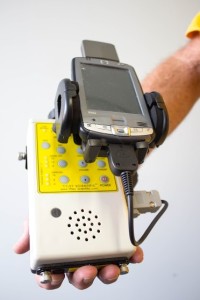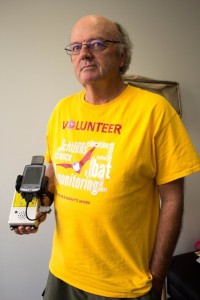 This past spring, the Red Cedar Basin Monitoring Group requested funds for an acoustic monitoring kit to collect data pertaining to the local bat population in Dunn County. The grant covered the kit itself along with proper cables, car mounts, power supply, and GPS. This equipment was used this past July to record bat acoustics along the Tainter Lake shores and a 48 mile stretch of road between Dunn and Barron counties.This data is needed specifically to monitor the effects of a disease called white-nose syndrome and its effects on our bat population.
This past spring, the Red Cedar Basin Monitoring Group requested funds for an acoustic monitoring kit to collect data pertaining to the local bat population in Dunn County. The grant covered the kit itself along with proper cables, car mounts, power supply, and GPS. This equipment was used this past July to record bat acoustics along the Tainter Lake shores and a 48 mile stretch of road between Dunn and Barron counties.This data is needed specifically to monitor the effects of a disease called white-nose syndrome and its effects on our bat population.
The disease effects the breathing of a bat during hibernation. This white fungus will grow on a bats muzzle and mouth, causing it to have difficulty breathing. The bat will then wake up from hibernation, causing its metabolism to increase, and since there is no food source, they often will die to starvation. The data, which is often collected by citizens around the state, is sent to The Wisconsin Bat Program, which monitors and manages the bat population in the state. Prior to receiving the funds from the Foundation, the Red Cedar Monitoring Group was borrowing a device from another group and required two trips to get and return the device. The closest area they were able to collect data from was at the Beaver Creek Reserve in Fall Creek. Now that the group has their own device, President Ted Ludwig is looking expand to 10 different bat monitoring routes within Dunn County, not including the two current routes listed above.
The data, which is often collected by citizens around the state, is sent to The Wisconsin Bat Program, which monitors and manages the bat population in the state. Prior to receiving the funds from the Foundation, the Red Cedar Monitoring Group was borrowing a device from another group and required two trips to get and return the device. The closest area they were able to collect data from was at the Beaver Creek Reserve in Fall Creek. Now that the group has their own device, President Ted Ludwig is looking expand to 10 different bat monitoring routes within Dunn County, not including the two current routes listed above.

